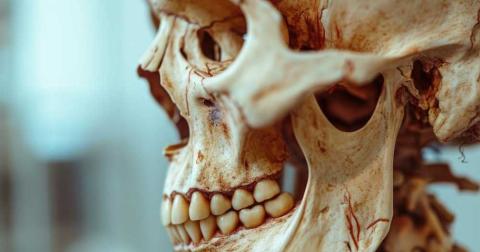Interview excerpt
Kathy Reichs is a luminary in the realms of forensic anthropology and thrilling crime literature. Thanks to her prolific series of novels and foundational role in the TV series Bones, Reichs’s work has significantly shaped public perceptions of forensic science, increasing awareness and bridging the gap between complex scientific truths and captivating storytelling.
AM: How do you think popular media, like your Bones book series and the TV series, has changed the public's perception of forensic anthropology?
KR: I began writing in the mid 1990s when the general public wasn’t as aware of forensics and the role the various specialties play in solving crimes. One of the biggest misconceptions created by the popular media is that every case is solved. That is simply not true.
One of the many good things about such books and shows is that they have made the public aware of the power of forensic science. And they have sparked the interest of numerous budding scientists. I receive emails and letters all the time in which readers or viewers say the TV series or the novels have inspired their own pursuit of the forensic sciences.
AM: When writing your novels, how do you balance the need for engaging storytelling with ensuring scientific accuracy in the forensic details?
KR: I think the key is to keep the scientific bits short, entertaining, and jargon free. I believe my readers want to learn something. They want to understand the science behind DNA, ballistics, blood splatter analysis, etc. But they don’t want to read a textbook. I write for the reader who is fascinated by forensics but also wants to enjoy a good old fashioned murder mystery.
AM: With the advent of new technology, what are some of the most exciting discoveries you’ve come across in forensic anthropology related to ancient history?
KR: I just read that the method for extracting DNA from ancient bone – from wooly mammoth and other archaeological specimens - is more useful in analyzing the remains of fire victims than traditional techniques of obtaining DNA. I hadn’t known that.
AM: How do you navigate the ethical and cultural challenges that come with handling human remains, especially those from indigenous cultures and the distant past?
KR: I think of the living, who can be comforted by my work with the dead. Cases arriving at my lab are homicide, suicide, and accident victims, people who have suffered violent deaths. Occasionally those whose deaths are difficult to explain. Forensic anthropologists tend to get the most severe cases, ones that can’t be resolved by the pathologist through normal autopsy. What I always keep in mind is that I am helping families who have a member that has gone missing or died violently under unknown circumstances. If there has been a crime, I may testify in court to help bring justice. While I work with the dead, I work for the living.
Read the full interview in the article ‘Unlocking the Past – From the Lab to the Library, Interview with Kathy Reichs’ available in the March – April 2024 issue of Ancient Origins Magazine. Get it here!
Stay up to date on the latest news about Kathy Reichs and her work https://kathyreichs.com/
Pre-order the new Temperance Brennan novel ‘Fire and Bones’ - available August 6, 2024.
Featured Image: Kathy Reichs discusses forensic anthropology in this interview excerpt. Source: Fotograf / Adobe Stock
By Alicia McDermott




